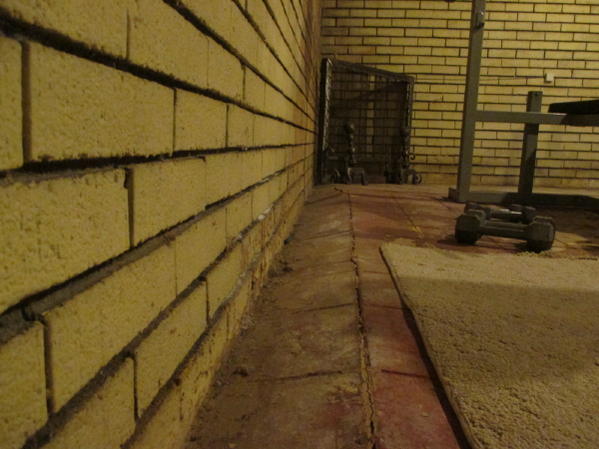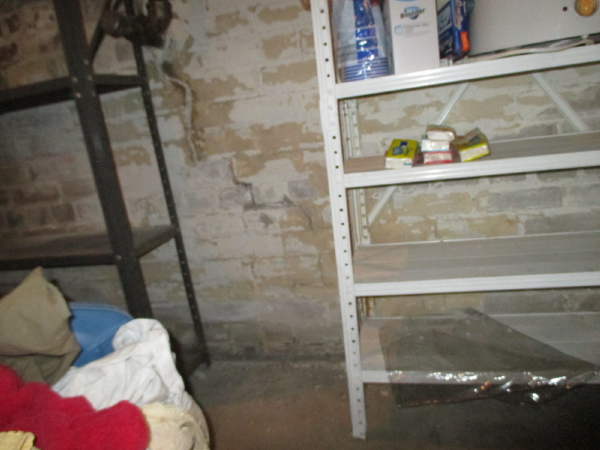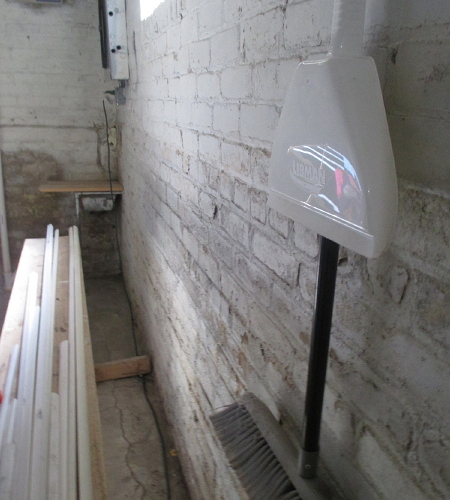Large (about 3000sf) c.1925 house with a brick basement foundation had noticeable basement floor cracking and sinking evident along the perimeter and the base of the chimney below the fireplaces. One of the foundation walls was also bowing outward, toward the yard (last pic).
This was consistent with sinking of the foundation and chimney walls. The concrete basement flooring was evidently rather thin, not more than about 2 inches. The sinking appeared relatively symmetric, as there were no cracks that were very wide or had significant elevation differences, the worst of which was shown on the third pic. There were only indications of slight seepage. There had been scattered recent thunderstorms in the area, and the area probably had a shower the previous evening.
The yellow brick where 2 of the pics were taken was a decorative veneer, not the foundation wall.
Also, cracking of the exterior masonry was observed, mainly near some windows, which was consistent with sinking on the sides of the windows, rather than above the lintels.
The house was built about a block from a large river, but no noticeable signs of soil erosion were observed. The downspouts were, however, run into sectional ceramic storm drains, which may have caused some erosion from soil having been drawn into the drains. There were some tall trees, but none very near the house.
Overall drainage was to the front, and the grade was mostly level in the rear, though a slight depression was observed on the driveway side near the wall that was bowing out to the yard.
Obviously there has been some unusual foundation movement, but how serious is it really?
My initial thoughts are that this was most likely due to poor soil preparation upon construction, the house has been standing almost 90 years, has probably settled into place, and is unlikely to change much in the near future, though re-direction of the downspouts and improvement of drainage and grading in the rear would obviously be advisable, and complete elimination of seepage would likely be difficult and expensive to accomplish.
Thoughts, anyone?





